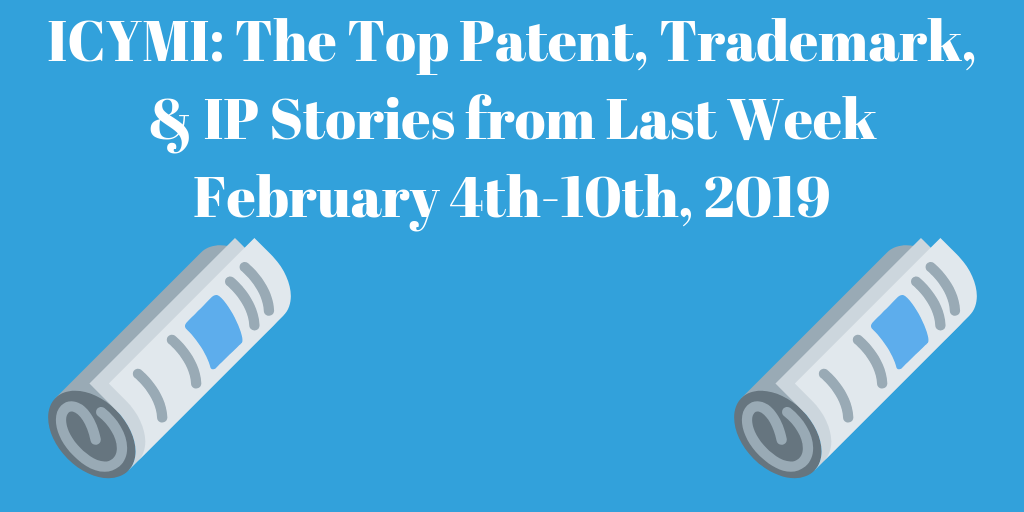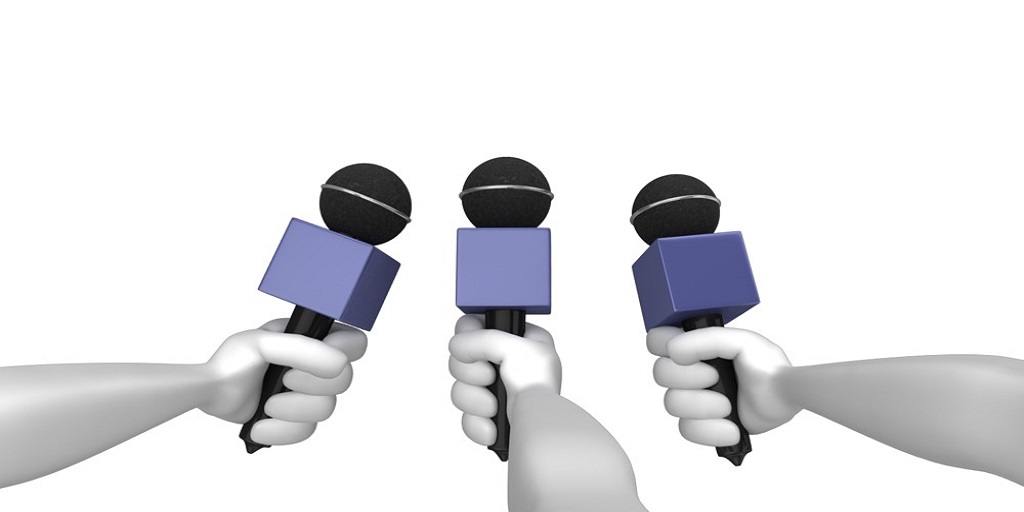Top Patent, Trademark, and IP Stories from Last Week (2/4-2/10/19)
ICYMI: The Top Patent, Trademark, and IP Stories from Last Week (February 4th-10th, 2019)
Every week, we will be highlighting the top patent, copyright, trademark, intellectual property, etc. stories of the previous week in our “In Case You Missed It” segment. The list itself is in no particular order and includes a wide range of stories from the patent world that are informative, noteworthy, or just plain bizarre. The stories included encompass everything from Supreme Court cases to insights into emerging industries. Please feel free to comment your thoughts on the stories or share an important one we missed!
1.) “Campbell’s Soup Officially Trademarks the Word ‘Chunky”
The USPTO has granted Campbell’s Soup trademark rights for the word “Chunky” for its Chunky

soup brand. In the application, Campbell’s cited the brand’s $13 billion in sales and $1 billion in advertising since its 1988 inception as a basis for the trademark. They argued “chunky” had become synonymous with their soup.
To demonstrate how “chunky” had become one and the same with their soup, Campbell’s provided countless examples of pop cultural references featuring the brand. Everything from song lyrics, Saturday Night Live sketches, late night jokes, satirical articles, and a 20-year partnership with the NFL helped make the case for the trademark as culturally relevant.
As for the trademark itself, do not expect Campbell’s to start selling “Chunky” ice cream or chocolate chip cookies, the right only applies to soup. To read more about this story, click here (via AdWeek, February 5th, 2019)
2.) “Court Rules Medical Diagnostic Can’t Be Patented, Leaving Biotech in ‘Legal Mess”
In a 2-1 decision last week, a U.S. appeals court ruled that a method used for diagnosing neurological disorders cannot be patented as it covers a “law of nature.” The method, which uses the detection of antibodies to diagnose such disorders, occurs naturally and simply covers “the correlation between certain antibodies and the autoimmune disease Myasthenia gravis.”
The ruling arose from a 2015 dispute in which Quest Diagnostics Inc., who was granted a patent for the method, sued Mayo Clinic over royalties for using it. Mayo won after the court agreed last week that the method was a law of nature which the Supreme Court has found are not patentable.
“Laws of nature and natural phenomena, as identified by the courts, include naturally occurring principles/relations and nature-based products that are naturally occurring or that do not have markedly different characteristics compared to what occurs in” –USPTO, 2016
Despite the ruling, there was still some reluctance over the decision. Circuit Judge Alan Lourie of the majority stated “the claims at issue here involve both the discovery of a natural law and certain concrete steps to observe its operation.” Although such laws cannot be patented themselves, Lourie went on to argue that such processes may be patentable if arrival takes more than “conventional steps.” For example, a manufactured substance to conduct the test.
Circuit Judge Pauline Newman said in her dissent that the ruling adds more ambiguity to what is patentable in diagnostic test development. “For procedures that require extensive development and federal approval, unpredictability of patent support is a disincentive to development of new diagnostic methods,” she added.
The decision adds further confusion for diagnostic test developers who may seek patents elsewhere as patent ambiguity dissuades innovation in the field. Scientific developments and the laws of nature will always be intertwined so developers must use caution when filing ambiguous patents. To read more about this story, click here (via Bloomberg, February 6th, 2019
3.) “United States Moves Up in International Rankings for Patent Protection”
The U.S. Chamber of Commerce Global Innovation Policy Center (GIPC) recently ranked the United States number one overall in patent protection policy and standard setting for 2019. The score reflects a strong commitment to patent, trademark, and trade secret protection, as well as enforcement of infringements and commercialization of IP assets.
Following a disastrous 12th place finish last year, the U.S. placed 2nd in “Patents, Related Rights, and Limitations” for 2019. This category measures the strength of the economy for patents and related rights and weighs such factors as the term for patent protection and ability to oppose patents in a fair manner. Such a change in the ranking can be attested to USPTO reforms addressing patent uncertainty.
Following the report’s release, USPTO Director Andrei Iancu reaffirmed the importance of patent policy in driving and protecting innovation. “As the global intellectual property space becomes increasingly competitive, we must continue to fuel American innovation through a reliable, predictable, and high-quality patent system,” he noted.
Overall, the U.S. either beat or tied the average score of the Top 5 economies for each indicator. The report noted the continued uncertainty in the patentability of high-tech sectors and lack of addressing online piracy as major weaknesses for the U.S. infrastructure. As for notable strengths, the GIPC recognized the U.S. as the “global leader and standard setter” for IP protection and enforcement. To read more about this story, click here (via USPTO, February 7th, 2019)
4.) “Soldiers Are Firing Off Spider-Man-Like Nets From Grenades to Down Enemy Drones”
The U.S. Army has recently secured a patent for a projectile that, when fired, will entangle enemy targets including boats and drones in a net. The projectile will be able to be launched from a standard grenade launcher and intercept the enemy.
The net, complete with weights, would be launched from a compressed air tube, spinning as it ensnares its target. The illustration below shows the process of projectile leaving the launcher, released the ball lock mechanism, deploying its net, and capturing the enemy.

With the threat of drones in combat zones and restricted areas increases, the invention has the potential to eliminate such threats. Platoons can carry numerous projectiles and take down enemy soldiers or drones from hundreds of yards away. To read more about this story, click here (via Business Insider, February 8th, 2019)




